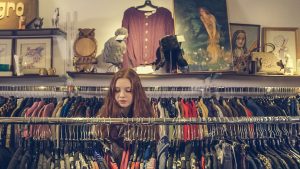Defined as a generic garment originating from a previous era in history, vintage clothing has officially secured its position in the vast world of today’s complex, rapidly evolving, and multifaceted fashion industry. While the mere mention of “vintage clothes” can often invoke thoughts of frumpy, stained, shapeless dresses that smell of Borax and mothballs, that is a generalization which only really applies to a small percentage of the pieces available on today’s market.
What is vintage clothing?
Ultimately, in order to dispel stereotypes that currently exist with respect to clothing that is labeled “vintage”, it is important to have a clear understanding of what they are. Essentially, vintage clothes are considered to be garments for both men and women that were created after the 1920s, while wardrobe pieces that were produced prior to that year are considered to be “antique”.
Therefore, it is commonplace to find clothes that evoke memories of a turbulent and pivotal period in American history that was characterized by prosperity, the Depression, two world wars, and beyond. Hence, pieces essentially run the gamut from the sparkly, bejeweled Flapper dresses of the 20s to the bold color motifs and patterning prevalent during the 70s, in addition to everything in between. While some may choose to wear vintage clothing due to having an interest and appreciation for fashions and the lifestyle that existed in the past, there are several other reasons that women choose to incorporate them into their wardrobes as well.
Firstly, vintage clothing is considered to be of higher quality than those that are produced today due to the type of fabric and design that was utilized prior to the mid-1980s. Secondly, the clothes are indirectly more environmentally friendly as well thus, with current attitudes that exist regarding sustainable living, vintage lines offer a large number of options for the eco-conscious to choose from.

Vintage Clothing and the Era of Beautiful
Where you can find vintage clothing?
Additionally, in terms of selection, the possibilities are simply endless- whether one is searching for a flared 50s poodle skirt or one in a 60s Mad Men-Esque style or even a long 70s era paisley print one, they have a plethora of options to choose from. Hence, not only are vintage clothes available in consignment shops, church bazaars, garage, and estate sales, flea markets, and auctions, they can also be found on the Internet as well. Therefore, the juxtaposition of the “old” and relatively new technology can enable one to enjoy searching for such clothing pieces easily without having to spend hours in a dusty old shop looking for the perfect dress or outfit.
However whether a person chooses to obtain their vintage clothing at a sale, boutique, or online, in each case doing so enables one to at least some extent, enjoy a glimpse of a period in history that, like its original wearer, is long since gone but will ultimately never be forgotten.




